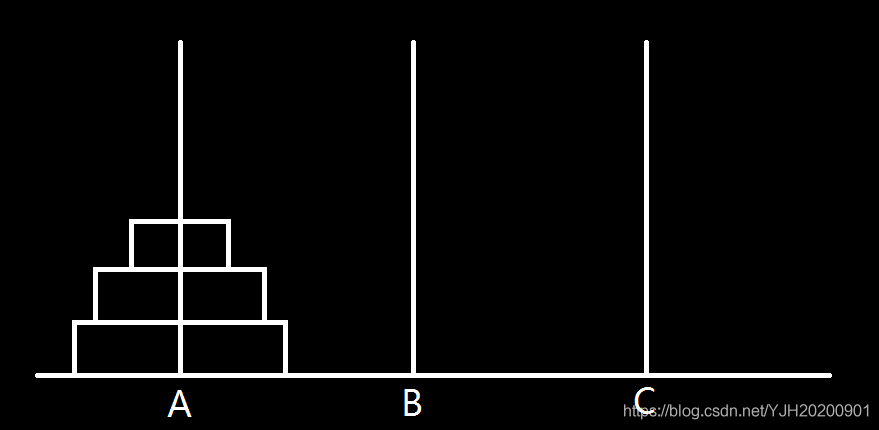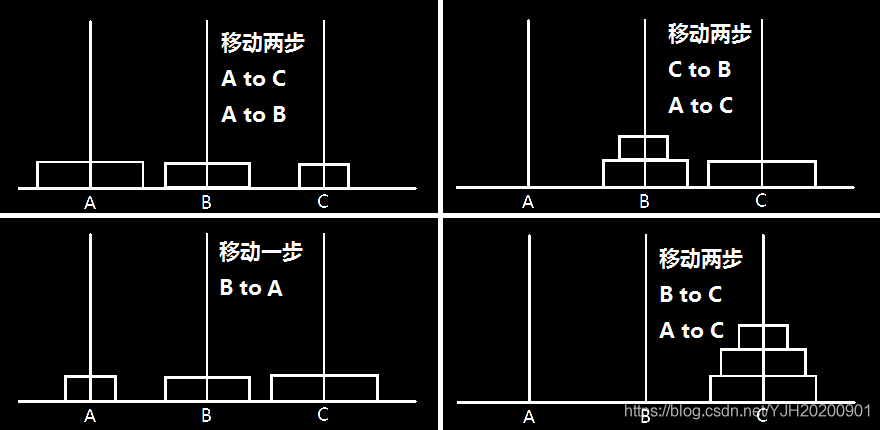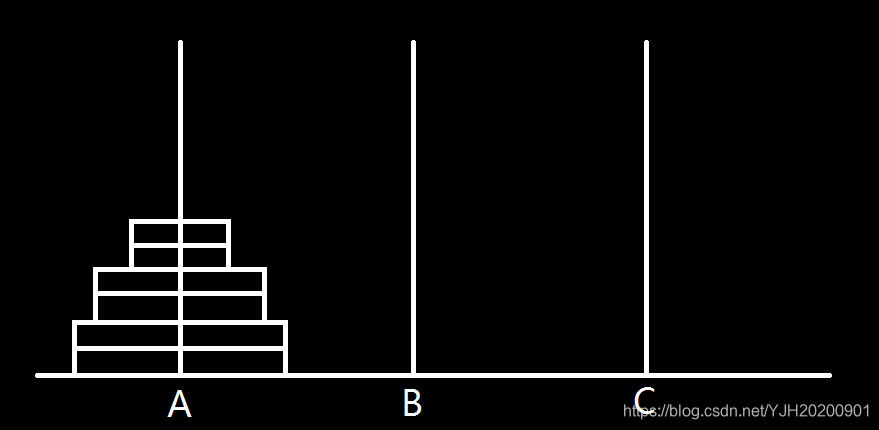You can not select more than 25 topics
Topics must start with a letter or number, can include dashes ('-') and can be up to 35 characters long.
4.3 KiB
4.3 KiB
AcWing 432. Hanoi双塔问题
一.汉若单塔(也称经典汉若塔问题)
首先,我们先画个 n=3 图:
要把 A 柱上的 圆盘 移到 C 柱上,要求无论在哪个柱子上的圆盘都是大的在下面,小的在上面。求从 A 柱上的圆盘移到 C 柱上要多少步?
1. 实践
遇到这种问题,首先想到的是先模拟一次,如下图:
怎么样?看完过程,是不是清晰了许多?全过程是这样的:
| 步数 | 操作 |
|---|---|
| 1 | ① A to C |
| 2 | ② A to B |
| 3 | ① C to B |
| 4 | ③ A to C |
| 5 | ① B to A |
| 6 | ② B to C |
| 7 | ① A to C |
2. 探索
解释 ① :最上面的第
1个圆饼 ② :中间的第2个圆饼 ③ :最下面的第3个圆饼
总共7步。仔细观察我们可以发现,移动的盘子是对称的,如上表:①②①③①②①。
以③为点 ,左右对称。再看看右边①②①,也是对称的,这是 n=2 时移动的步数。我们是不是可以推测出如果 n=4 时,①②①③①②①④①②①③①②①是移动顺序呢?事实证明的确如此。移动顺序总是上一个序列加上新的盘子再加上一个序列。
注 我终于懂了汉诺塔,真是太
TM简单了~
由此可得递推公式:
\large f[i] =f[i−1] ∗2+13. 运用
如何运用到c++里面呢?
int f[10010];
int n;
scanf ("%d", &n);
for (int i = 1 ; i <= n ; i++)
f[i] = f[i-1] * 2 + 1;
printf ("%d\n", f[n]);
这就是主程序。
4. 思考
如何输出中间的步骤?可在评论区回答 or 讨论!
二.汉若双塔
1. 认识
他就是每种型号多了1个盘子。移动起来的步骤也就乘2了。
2. 实现
int f[10010];
int n;
scanf ("%d", &n);
for (int i = 1 ; i <= n ; i++)
f[i] = f[i-1] * 2 + 1;
printf ("%d\n", f[n] * 2);
三.加强
当数据 n<=200 时,我们应该怎么做? answer :当然是 无符号 long long 啦。
NO!NO!NO! 我们应该开高精度,这才是正解!!!
康康 code :
#include <bits/stdc++.h>
using namespace std;
const int N = 100010;
// 加法高精度
int a[N], b[N];
int al, bl;
void add(int a[], int &al, int b[], int &bl) {
int t = 0;
al = max(al, bl);
for (int i = 1; i <= al; i++) {
t += a[i] + b[i];
a[i] = t % 10;
t /= 10;
}
if (t) a[++al] = 1;
}
int main() {
int n;
cin >> n;
b[++bl] = 1;
for (int i = 1; i <= n; i++) {
add(a, al, a, al);
add(a, al, b, bl);
}
// 最后再乘以2
add(a, al, a, al);
for (int i = al; i; i--) cout << a[i];
return 0;
}


